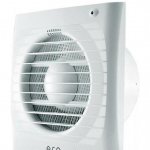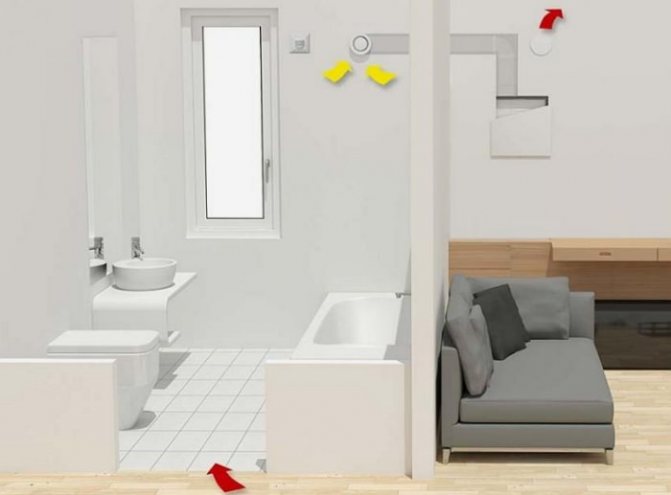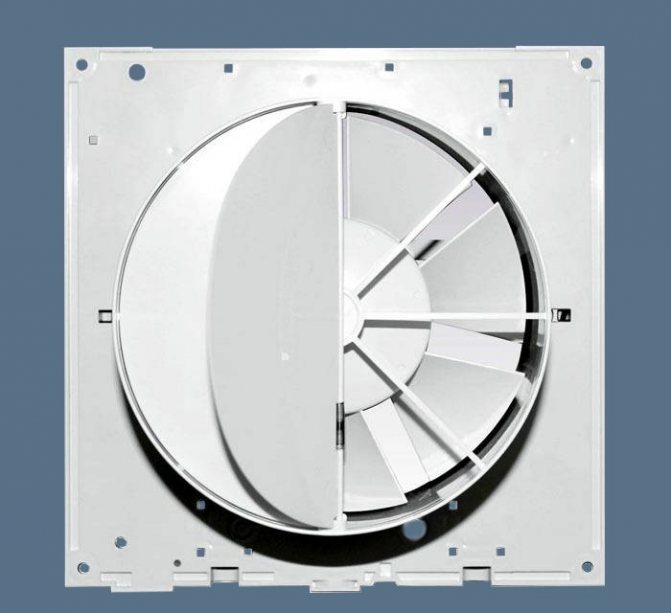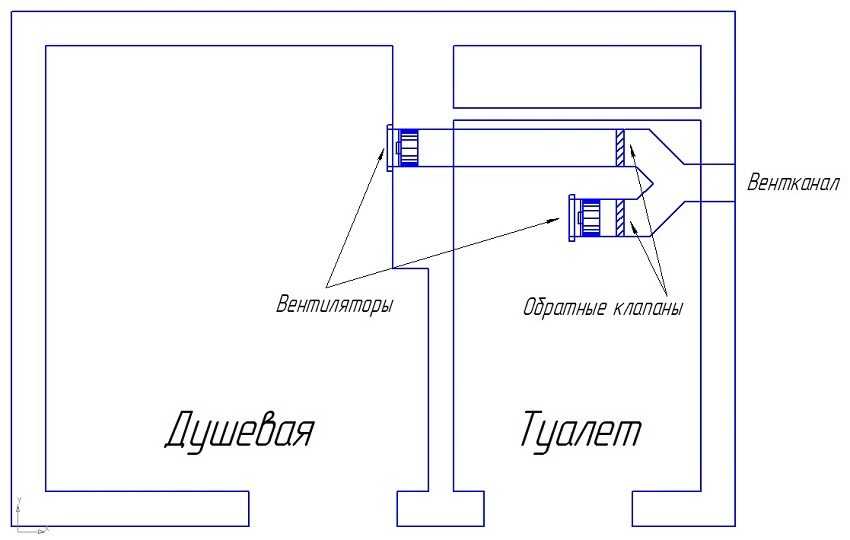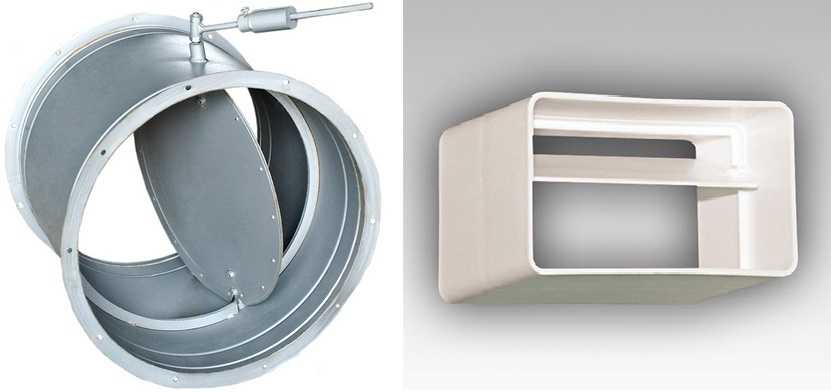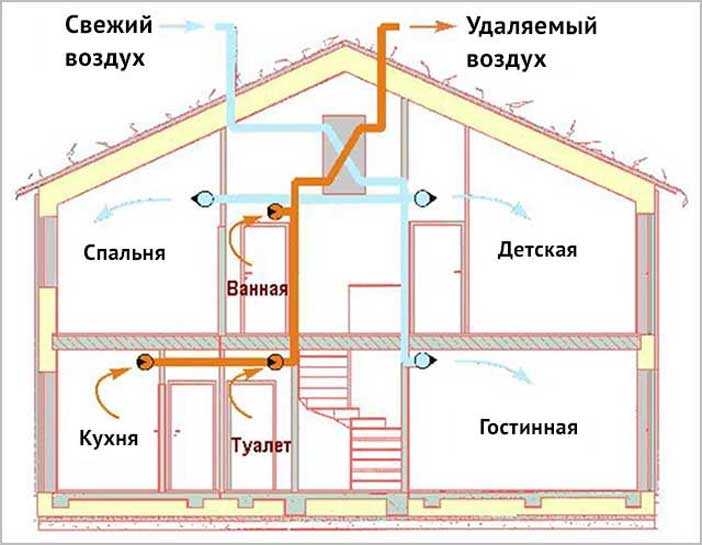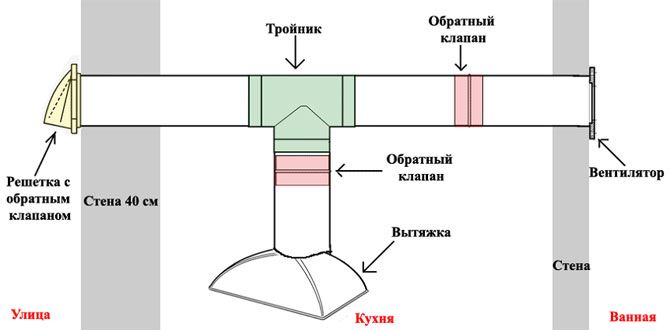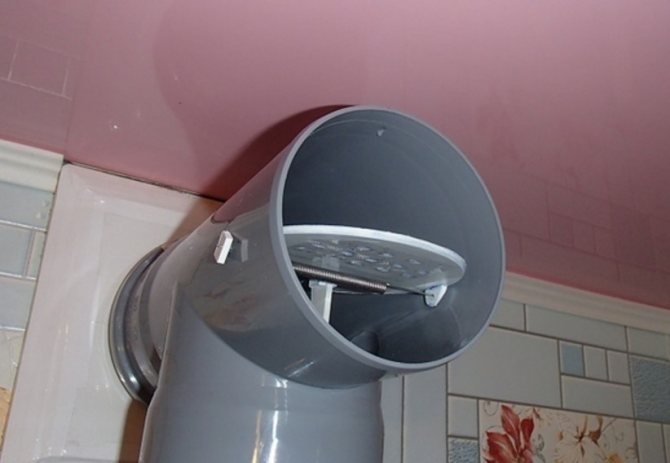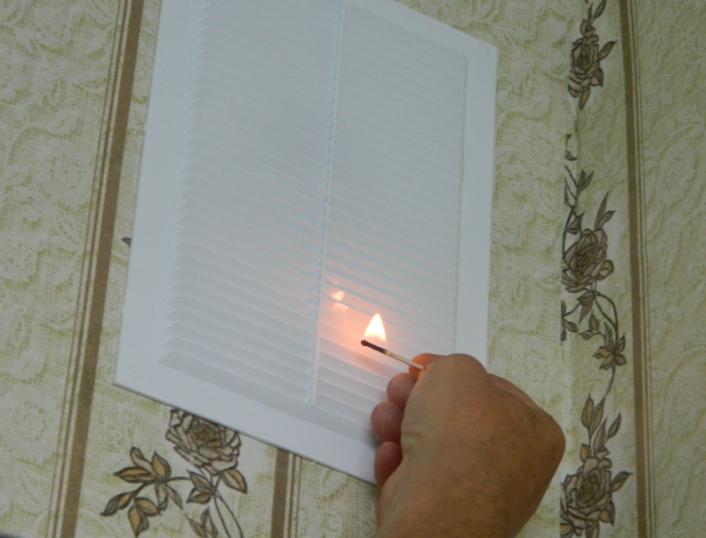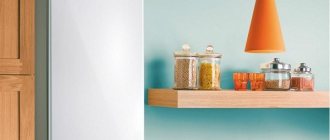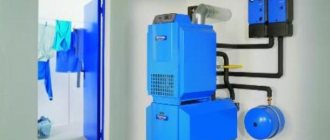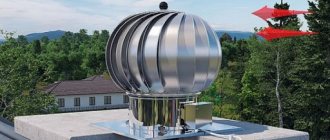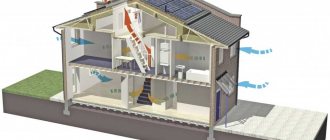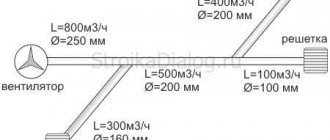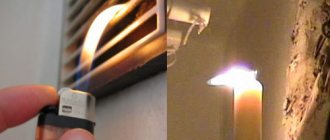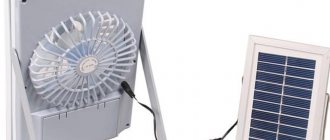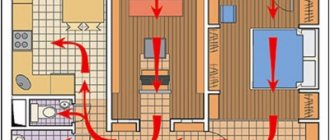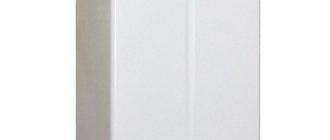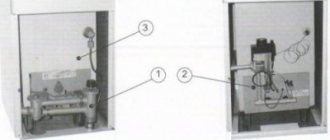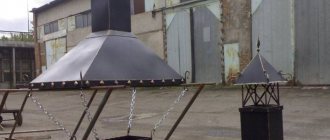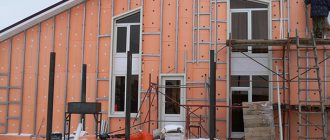The ventilation system is one of the main components in the general system of engineering support for the life of buildings. Its main purpose lies in the term itself, translated from Latin as "airing". Normal operation of ventilation should ensure comfortable and sanitary and hygienic living conditions for the population, and for industrial enterprises - compliance with regulatory and design indicators for the content of harmful substances, gas pollution, permissible emissions, and safety.
The functions of ventilation systems include ensuring the balance of the volumes of incoming and outgoing air in compliance with the required air exchange rate, ensuring the required temperature, humidity, and cleanliness of the air environment.
Classification of ventilation systems
Ventilation systems are classified both by purpose and by the method of organizing air exchange.
The following types of ventilation exist for their intended purpose:
- Supply, which supplies a certain amount of air to a building or room.
- Exhaust, providing removal of exhaust air.
- Supply and exhaust is a combined system, which includes elements of both types.
According to the method of organizing air exchange, ventilation is divided into:
- Natural, in which the degree of air exchange is determined by the difference in air pressure outside and inside the building. In this case, natural ventilation can be unorganized, in which air exchange is carried out through leaks or open doors, windows, vents, or organized - through a system of ventilation shafts, channels, openings.
- Mechanical, in which the pressure difference is created by the fan, and the operability is ensured by various devices and equipment - filters, noise dampers, regulators.
Solenoid valve device
The valve is very simple. It contains the following details.
The external threads of the inlet and outlet pipes are 1/4 "or more, depending on the flow rate. The least amount of water passes through the solenoid valve for drip irrigation. Small-sized devices are built into the pipeline with water and operate on a timer that sets different irrigation modes.
Recently, there have been models combined with a switch. Available from the internet shop: the popular GARDENA C 1060 plus solenoid valve for irrigation. It automatically switches the water supply to irrigate the garden.
Reverse thrust problem
The development of new building technologies characteristic of the last decades, the emergence of new building materials and products, advanced and sophisticated household appliances forced the population to expand their knowledge in the theoretical and practical terms of organizing the ventilation of their living space. The fight against "reverse thrust" has become relevant for the owners of apartments and private houses.
Reverse thrust - violation of the normal mode of air exchange, in which there is a decrease in the rate of air removal up to the return flow through the exhaust ducts into the room. The reasons may be design miscalculations, natural causes (pressure drops both towards rarefaction and towards hurricane gusts), various defects in building elements (clogging, freezing, destruction of channels), as well as spontaneous changes in the design and design mode of the system.
An example of the latter reason is a standard high-rise building for which an organized natural type of ventilation has been established by the project.More than one generation is familiar with wooden doors and window frames with vents, seasonal campaigns for their insulation, puttying and gluing. The calculation of air exchange of entrances and risers was carried out taking into account the structural leakage of these elements. The massive installation of sealed plastic windows and metal doors that are denser in comparison with wooden doors has made adjustments to the established balance.
Another factor was the active installation of exhaust fans - on ventilation windows in bathrooms or as part of hoods above a gas stove, the result of which was the mutual exchange of a bouquet of odors between neighbors, which also indicates a disturbed balance of air exchange.
Protection system
One of the most effective methods of dealing with backdraft is the installation of a check valve, which allows the medium to pass in one direction and does not allow it to move in the opposite direction. In technical terms, these devices refer to protective fittings and are used in hydraulic and pneumatic systems, which include ventilation systems.
Industrial ventilation systems are mandatory equipped with non-return valves, therefore, in order to meet the emerging needs of the population for these products, it was not necessary to reinvent the wheel. The existing types of structures were taken as a basis and adapted for domestic needs, taking into account the required costs, dimensions and design requirements. The main structural designs used in industry turned out to be applicable for the household sphere:
- Petal, in which the working body is a disc fixed on the axis. The weight of the disc is designed to be opened by the air flow in normal mode and flopped in the event of reverse thrust.
- Louvers... Working lamellar sashes are mounted on axles, opening and closing occurs from the air movement in the forward or reverse direction.
- Diaphragm valves they work on the principle of a lattice, one or two membranes made of soft material (film, plastic, rubber), fixed on one side, serve as flaps.
The listed structures can be used in systems with both natural and supply and exhaust ventilation, and according to the mechanism of action they are passive, in contrast to the next one, which contains an active element.
- Butterfly check valve (butterfly type for industrial valves) is a two-disc (equivalent to two-leaf, double-leaf) with springs that ensure the tightness of the shutters. To open, the springs are designed for a certain air flow pressure, as a rule, created by a fan, therefore butterfly valves are practically not used for natural ventilation.
The main characteristics of the check valve, which determine the possibility of its application, are the flow area, flow capacity and the tightness of the shutter at actuation.
The first two parameters should provide the standard air exchange rates determined by sanitary and building regulations. For living rooms, this figure is 3 cubic meters / hour per 1 square meter. area or 30 cubic meters / hour for 1 person, for a standard kitchen with a 4-burner gas stove at least 90 cubic meters / hour. For domestic ventilation systems, check valves with a diameter of 50 to 150 mm (or the corresponding size for a square or rectangular design) are mainly used.
Unfortunately, manufacturers of valves produced for the population practically do not indicate the throughput or the coefficient of throughput Ksv in their passports, in contrast to manufacturers for industrial purposes. It remains to either trust their professionalism and responsibility, or independently check the valve's performance.
Standard indicator for checking normal thrust in the ventilation duct there is a flame of a match or a lighter or a notebook sheet.The burning torch should deflect in the direction of the thrust, the sheet should be held by the vacuum force. If you lean against the ventilation opening of any type of non-butterfly valve, its flaps (louvers, membrane) should open. If you repeat the operation, turning the valve 180 °, the thrust should be enough to close it, and the tightness can be checked with the same lighter.
The specified method is suitable only for checking the exhaust check valve of ventilation as an independent product. For convenience and ease of installation, modular options are increasingly being offered - a ventilation grill with a check valve, they are also with a fan, an air duct unit with them with a built-in filter, a temperature sensor, and so on.
Specifications
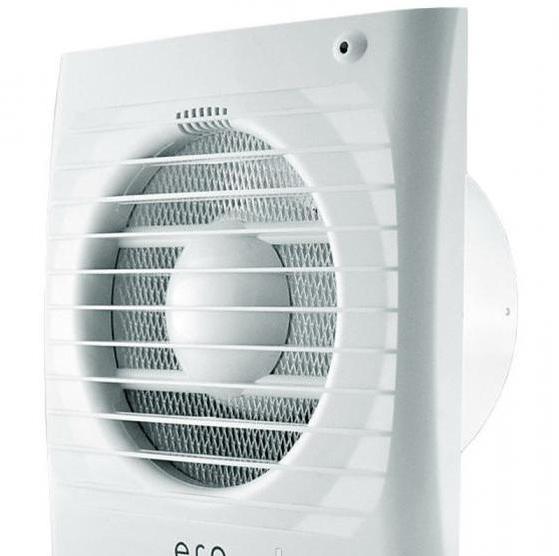
The above-described hood with a check valve has a duct diameter of 125 mm. The productivity reaches 140 m3 per hour. The design does not provide for the presence of a timer. The design is not splash-proof.
The power is 10 W. The overall dimensions are 180x180x99.5 mm. The device weighs 0.65 kg. It operates on a 220V network. Before buying a device, you should take into account that it does not have a humidity sensor.
Residential ventilation problems
As a rule, check valves are installed on exhaust air ducts or ventilation openings, and much less often as supply ones. This is quite understandable, since initially it is assumed that clean and fresh air will enter the house or apartment, and protection devices must be installed on the side of removing polluted or exhaust air.
In general, the ventilation device or the solution to the problems that have arisen must be approached in a comprehensive manner. Backdraft problems are most often the result of errors or irregularities during installation or operation. The lack of an integrated approach is again characteristic of the previously mentioned high-rise buildings. Unlike power supply, water supply and heating systems, the ventilation system is not under the control of any utilities or inspections and is not controlled by management companies. As a result, the tenants each solve problems in their own way, layering their mistakes on those of others, including "locking" the air movement with the help of fans and valves to both neighbors and themselves.
It is for this reason that the involvement of specialists is simply necessary for these works, from calculations and design to the commissioning of systems and devices.
Soler & Palau SILENT-100 CZ range hood review
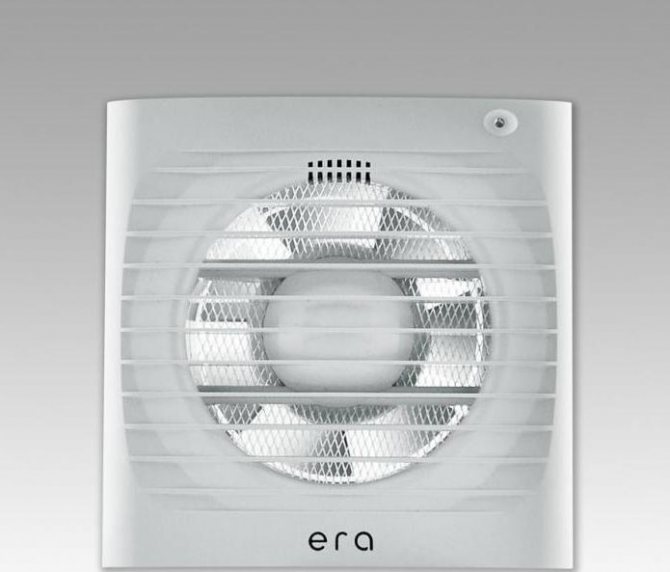
This equipment can be purchased for 1,800 rubles. It is a surface mounted axial fan with an output of 8 W. Contaminated air will not enter the room through the device. The device handles 95 m3 per hour. It is enclosed in a waterproof case. By installing the described hood with a non-return valve, you can operate it mechanically. The noise level during operation is 27 dB.
The device has one operating speed. The equipment does not have height adjustment and timer. The installation diameter is 100 mm. Body color is white. The hood complies with the second class of electrical safety. It is powered by 230 V. Its overall dimensions are 15.8 x 15.8 x 8.4 cm. The fan weighs 0.57 kg.
Electrolux EAFR 100 range hood review
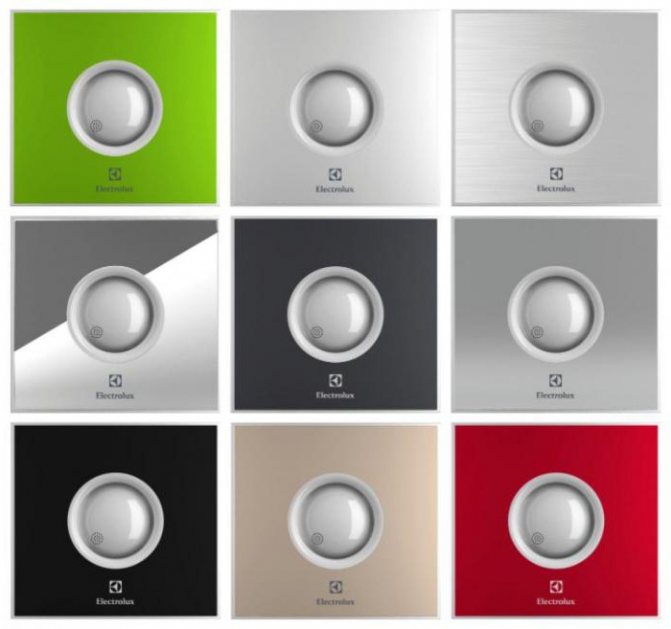

The EAFR 100 model from the Electrolux company acts as an alternative market offer, which you can purchase for 1,500 rubles. The fan is axial; it is placed on the surface during installation. The power reaches 15 watts. The equipment does not allow polluted air to enter the room.
The device is capable of processing 100 m3 of air per hour. The housing is waterproof. There is no timer and height adjustment in the design. The noise level is 30 dB. It is based on plastic. The installation diameter is 98 mm. Dimensions: 15x14x7.5 cm, unit weighs 0.46 kg.
Model Specifications
If you want to purchase a toilet hood with a check valve, then you should pay attention to the model that was described above. It is installed on a 100 mm air duct. The equipment does not provide for a timer and protective performance. The noise level during operation reaches 35 dB.
The overall dimensions are 150x150x85 mm. The device weighs 0.5 kg. It is powered from a 220 V network. There is no humidity sensor in the design. The capacity reaches 97 m3 per hour.
ERA 4C fan overview
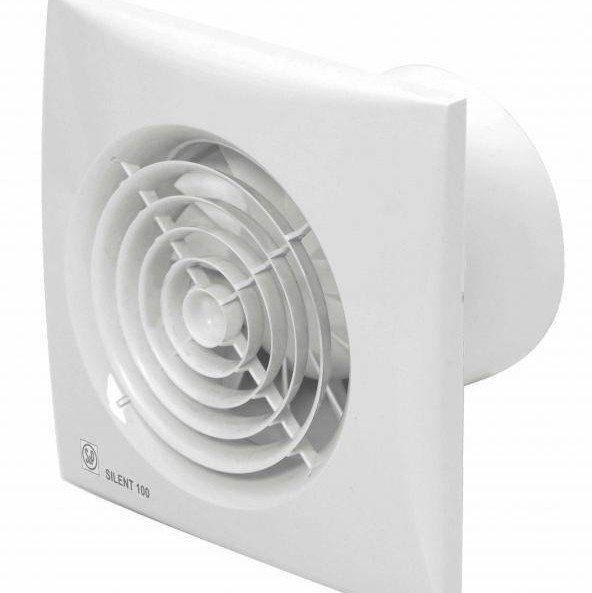

If you want to purchase a hood with a check valve, you should pay attention to the model mentioned in the subheading. Its cost is only 380 rubles. The fan is overhead, and its power is 14 W. Due to the check valve, polluted air will not pass into the room. The device is capable of handling 97 m3 per hour. It has a waterproof housing.
Timer and height adjustment, like the above device, this device does not. The equipment can operate at one of two speeds. Management is electronic. The noise level is kept at around 35 dB. It is based on plastic. The installation diameter reaches 100 mm. This exhaust fan with non-return valve has a mosquito net. The overall dimensions of the device are 15x15x8.4 cm, and its weight is 0.48 kg.

